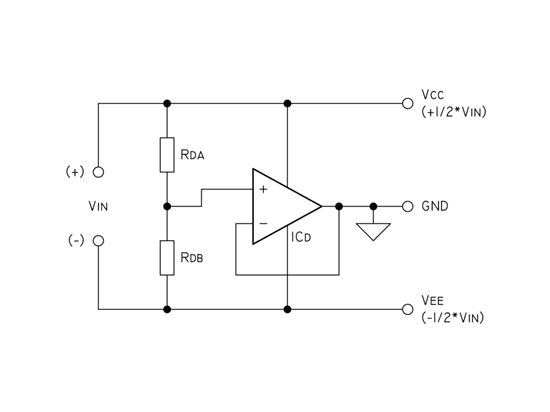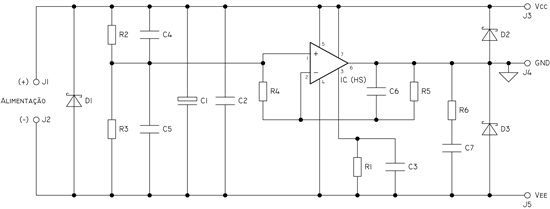Hi,
I'm doing a rail splitter, that follows the basic concept shown in the next schematic diagram:
In order to eliminate noise, I've used a 100uF capacitor and a 100nF bypass capacitor across the supply and two 10nF capacitors in parallel with the resistors Rda and Rdb (those are 10K each), As for the current limiting, I've used a 22K resistor paralleled with a 10nF capacitor, from pin 3 (Ilim) to V-. I've tied pin 7 (E/S) to V+. I've used two free-wheeling diodes across the output and, of course, a zobel consisting of one 4,7R resistor and a 100nF capacitor.
The problem is that the OPA548 limits the current to around 700-800mA when sinking (output shorted to V+), and that current pretty much depends on the supply voltage. However, when sourcing (output shorted to V-), it behaves as expected, since the current is limited to 2A (Rlim = 22k). Why does the current limit doesn't work properly when sinking? Is it a defective design? A damaged chip? Or is it that the current limiting is only applied when the OPA548 is sourcing? I've tried everything! I've changed the resistor values, taken out the zobel and the diodes, untied the E/S pin from V+, and the behaviour is still the same! What is wrong?



